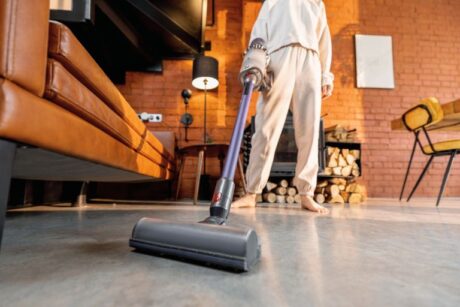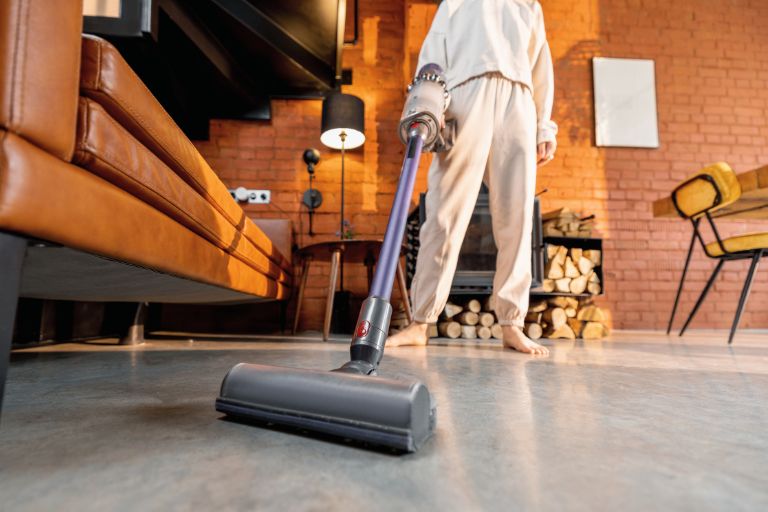A Dyson vacuum cleaner is a fantastic investment for keeping your home clean and free of dust and allergens. However, to ensure it continues to perform at its best, regular cleaning and maintenance are essential.
This guide will walk you through the process of cleaning your Dyson vacuum cleaner, covering everything from emptying the dustbin to washing the filters and maintaining the brush bar.
Follow these steps to Clean Your Dyson Vacuum Cleaner thoroughly:
- Step 1: Gather Your Supplies
- Step 2: Unplug the Vacuum Cleaner
- Step 3: Empty the Dustbin
- Step 4: Clean the Filters
- Step 5: Check and Clean the Brush Bar
- Step 6: Inspect the Hose and Attachments
- Step 7: Reassemble the Vacuum Cleaner
- Step 8: Perform a Test Run
Detailed Steps to Clean Dyson Vacuum Cleaner
1. Gather Your Supplies
Before you start, gather the necessary supplies to clean your Dyson vacuum cleaner:
- Soft cloths or microfiber cloths
- A small brush or toothbrush
- Scissors or a utility knife
- Mild detergent or dish soap
- Warm water
2. Unplug the Vacuum Cleaner
Safety first: always unplug your Dyson vacuum cleaner before performing any maintenance or cleaning tasks. This prevents accidental starts and ensures you can safely access all parts of the vacuum.
3. Empty the Dustbin
The dustbin collects all the dirt and debris picked up by your vacuum. Emptying it regularly is crucial for maintaining suction power and efficiency.
- Remove the Dustbin: Locate the dustbin release button, typically found near the handle or on the main body of the vacuum. Press the button to release the dustbin.
- Empty the Contents: Hold the dustbin over a trash can and press the release catch to open the bottom lid. Allow the dust and debris to fall out. You might need to tap the dustbin gently to dislodge any stubborn particles.
- Clean the Dustbin: Use a damp cloth to wipe the inside and outside of the dustbin. Avoid using harsh chemicals that could damage the plastic.
4. Clean the Filters
Dyson vacuums are equipped with filters that capture fine dust particles and allergens. Cleaning the filters regularly ensures optimal performance.
- Remove the Filters: Depending on your model, you may have one or more filters. Consult your user manual to locate and remove the filters. Typically, filters are located near the dustbin or in the ball of the vacuum.
- Wash the Filters: Rinse the filters under cold running water until the water runs clear. Gently squeeze out excess water, but avoid wringing or twisting the filters, as this can damage them.
- Dry the Filters: Allow the filters to air dry completely for at least 24 hours before reinserting them into the vacuum. Do not use a dryer or place them near a direct heat source, as this can cause damage.
5. Check and Clean the Brush Bar
The brush bar (or beater bar) is responsible for agitating carpet fibers and lifting dirt. Over time, hair and debris can get tangled in the brush bar, affecting its performance.
- Access the Brush Bar: Lay the vacuum on its side to access the brush bar. Some models have a release button or screws that need to be removed to access the brush bar.
- Remove Hair and Debris: Use scissors or a utility knife to carefully cut away any hair or threads wrapped around the brush bar. Be cautious not to damage the bristles.
- Clean the Brush Bar: Use a small brush or toothbrush to remove any remaining debris from the brush bar. If the brush bar is particularly dirty, you can wipe it with a damp cloth.
6. Inspect the Hose and Attachments
Clogs in the hose or attachments can reduce suction power and efficiency. Regularly inspecting and cleaning these parts helps maintain optimal performance.
- Check for Blockages: Disconnect the hose and attachments from the vacuum. Use a long, flexible brush or a straightened wire coat hanger to gently push out any blockages.
- Clean the Attachments: Wipe down the attachments with a damp cloth to remove dust and debris. If the attachments are very dirty, you can wash them with mild detergent and water, then allow them to air dry completely.
7. Reassemble the Vacuum Cleaner
Once all the components are clean and dry, reassemble your Dyson vacuum cleaner.
- Reinsert the Filters: Ensure the filters are completely dry before reinserting them into their respective slots.
- Attach the Dustbin: Securely attach the dustbin back onto the vacuum.
- Reconnect the Hose and Attachments: Reattach the hose and any other accessories you removed for cleaning.
8. Perform a Test Run
After reassembling your Dyson vacuum cleaner, plug it back in and perform a test run. Ensure that the suction power is strong and that the vacuum is operating smoothly. If you notice any issues, double-check the assembly and clean any components that may have been missed.
9. Regular Maintenance Tips
To keep your Dyson vacuum cleaner in top condition, follow these regular maintenance tips:
- Empty the Dustbin Frequently: Don’t wait until the dustbin is full. Empty it after every use or when it reaches the max fill line to maintain optimal performance.
- Clean the Filters Monthly: Wash the filters at least once a month, or more frequently if you use the vacuum heavily or have pets.
- Inspect the Brush Bar and Hose: Check the brush bar and hose for blockages and tangles regularly, especially if you vacuum a lot of hair or large debris.
- Store the Vacuum Properly: Store your Dyson vacuum in a cool, dry place, away from direct sunlight and moisture. This helps prevent damage to the components and extends the vacuum’s lifespan.
Frequently Asked Questions
How often should I clean my Dyson vacuum cleaner?
You should empty the dustbin after every use and wash the filters at least once a month. Inspect and clean the brush bar and hose as needed, depending on usage and the amount of debris your vacuum picks up.
Can I wash the filters in my Dyson vacuum cleaner with soap?
No, it’s best to rinse the filters with cold water only. Using soap or detergent can damage the filter material and reduce its effectiveness.
What should I do if my Dyson vacuum loses suction?
If your Dyson vacuum loses suction, check for blockages in the hose, brush bar, and attachments. Ensure the dustbin is empty and the filters are clean and dry. If the issue persists, contact Dyson customer support for further assistance.
How long do Dyson vacuum filters last?
With proper care and regular cleaning, Dyson vacuum filters can last several years. However, if you notice reduced performance or visible damage to the filters, it’s time to replace them.
Is it safe to vacuum up water or wet debris with my Dyson vacuum cleaner?
No, Dyson vacuum cleaners are not designed to handle water or wet debris. Vacuuming wet materials can damage the motor and other components. Always ensure that the areas you vacuum are dry.





